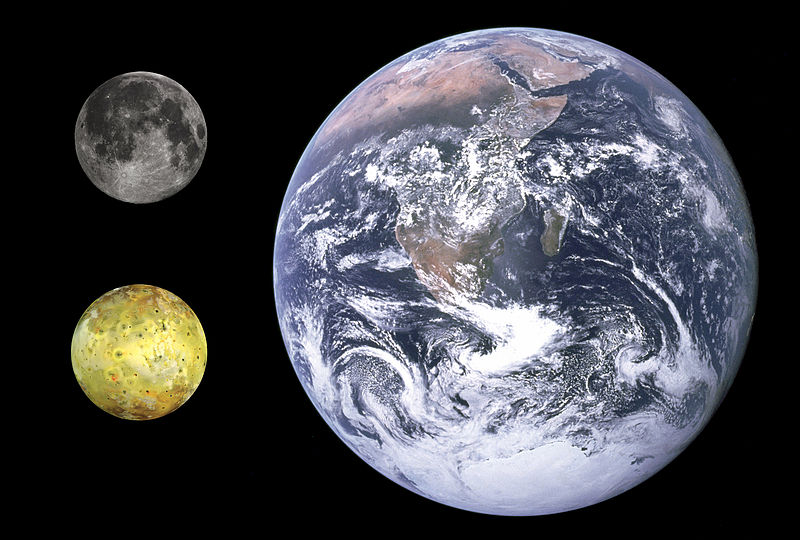Io is slightly larger than the Earth’s moon, and about a quarter of the diameter of the Earth itself (Shekhtman & Thompson, 2020). An example of the size difference between these three objects can be seen below.
In more specific measurements, Io has a mass of 894 x 1020kg, which makes it the Galilean moon with the second smallest mass (Fraknoi et al., 2022).
Its density is 3.6g/cm3, making it the densest moon of Jupiter (Fraknoi et al., 2022). It is also denser than the Earth’s moon (Fraknoi et al., 2022).
Io’s diameter is 3630km (Fraknoi et al., 2022). This makes Io the third largest Galilean moon by diameter. Io’s diameter is larger than our moon by 154km.
As for distance, Io is located about 7.8 x 108 km from the Sun (Montana State University, n.d.). For reference, Jupiter is the fifth planet from the Sun (NASA, Jupiter 2022). It is around 422,000 km from Jupiter as it orbits the planet (NASA, In depth 2021).

Fraknoi, A., Morrison, D., & Wolff, S. C. (2022). G | Selected Moons of the Planets. In Astronomy (2nd ed.). essay, OpenStax.
Io. Io handout. (n.d.). Retrieved October 30, 2022, from https://btc.montana.edu/ceres/html/ExtremeEnvironment/ExtremeIo.htm
NASA. (2021, July 19). In depth. NASA. Retrieved October 31, 2022, from https://solarsystem.nasa.gov/moons/jupiter-moons/io/in-depth/
NASA. (2022, August 10). Jupiter. NASA. Retrieved November 4, 2022, from https://solarsystem.nasa.gov/planets/jupiter/overview/
Shekhtman, L., & Thompson, J. (2020, November 10). Io. NASA. Retrieved October 30, 2022, from https://solarsystem.nasa.gov/moons/jupiter-moons/io/overview/
